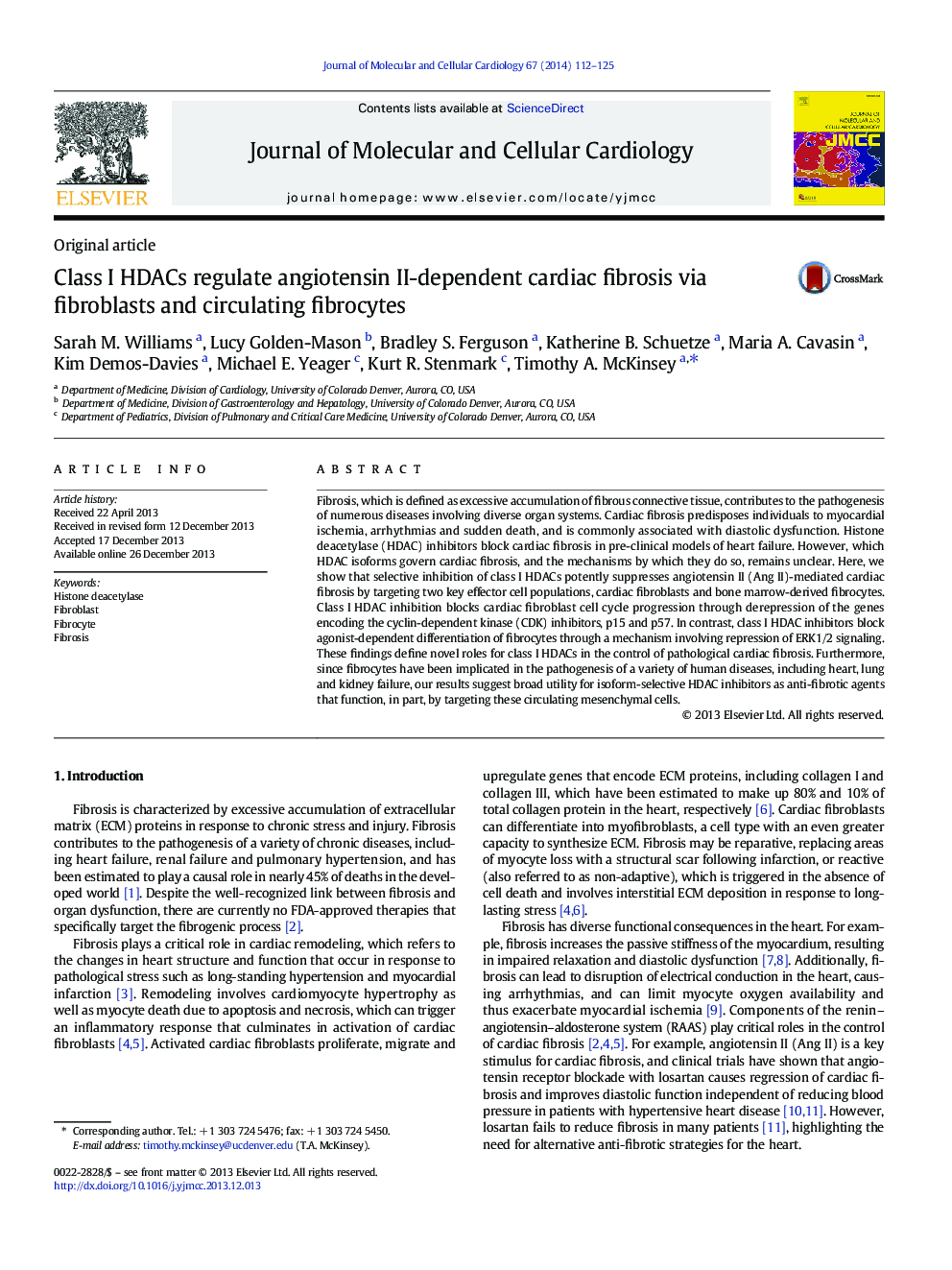| Article ID | Journal | Published Year | Pages | File Type |
|---|---|---|---|---|
| 2190579 | Journal of Molecular and Cellular Cardiology | 2014 | 14 Pages |
•Selective pharmacological inhibition of class I HDACs blocks cardiac fibrosis.•Class I HDAC inhibition blocks fibrocyte differentiation.•Class I HDAC inhibition blocks cardiac fibroblast activation.
Fibrosis, which is defined as excessive accumulation of fibrous connective tissue, contributes to the pathogenesis of numerous diseases involving diverse organ systems. Cardiac fibrosis predisposes individuals to myocardial ischemia, arrhythmias and sudden death, and is commonly associated with diastolic dysfunction. Histone deacetylase (HDAC) inhibitors block cardiac fibrosis in pre-clinical models of heart failure. However, which HDAC isoforms govern cardiac fibrosis, and the mechanisms by which they do so, remains unclear. Here, we show that selective inhibition of class I HDACs potently suppresses angiotensin II (Ang II)-mediated cardiac fibrosis by targeting two key effector cell populations, cardiac fibroblasts and bone marrow-derived fibrocytes. Class I HDAC inhibition blocks cardiac fibroblast cell cycle progression through derepression of the genes encoding the cyclin-dependent kinase (CDK) inhibitors, p15 and p57. In contrast, class I HDAC inhibitors block agonist-dependent differentiation of fibrocytes through a mechanism involving repression of ERK1/2 signaling. These findings define novel roles for class I HDACs in the control of pathological cardiac fibrosis. Furthermore, since fibrocytes have been implicated in the pathogenesis of a variety of human diseases, including heart, lung and kidney failure, our results suggest broad utility for isoform-selective HDAC inhibitors as anti-fibrotic agents that function, in part, by targeting these circulating mesenchymal cells.
